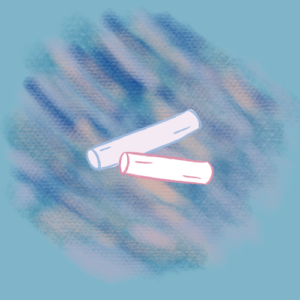
Figure 3. Eva Gonzalès, Une Loge aux Théâtre des Italiens. 1874. Oil on canvas. 98 x 130 cm. Musée d’Orsay, Paris, France.
The revival of pastel in the 1870s and 80s established a foundation for Gonzalès’s adoption of this medium, which emerged as a vehicle for bold aesthetic experimentation within the strictures of gender decorum. Gonzalès’s works in pastel exhibited Impressionistic technical features in this period that diverged from her early approximation of Manet’s style. Her facture became bolder as she exploited the potential of the medium, varying her brush strokes to convey effects of motion and refining the use of colored shadows.
In so doing, Gonzalès can be understood to have engaged in the “game play” of “reference,” “deference,” and “difference” that Griselda Pollock has identified as a common strategy for avant-garde artists. According to Pollock, “reference” is the act of alluding to established artists; “deference” demonstrates reverence toward prevailing artistic norms; “difference” constitutes the artist’s originality. The stakes of this “game play” were especially high for women artists, given that—as in the case of Gonzalès—their work was often perceived as simply derivative of their male mentors and peers. Pollock’s model helps situate Gonzalès’s practice in a more nuanced light, as the artist can be seen to have used pastel in order to posit “reference” to Degas; to pay “deference” to norms of female behavior; and to establish her “difference” from Manet.
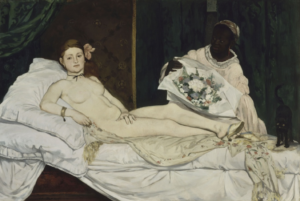
Figure 4. Edouard Manet. Olympia.1863. Oil on canvas. 130 x 190 cm. Musee d’Orsay, Paris, France
The imperative to establish her independence from Manet became clear when her painting Une Loge aux Théâtre Italiens (Fig 3) was rejected from the Salon of 1874.[46] The jury described this large-scale, ambitious oil painting as having a certain “masculine vigor,” inviting speculation that Manet himself had a hand in executing the work, as he had in Berthe Morisot’s painting La Lecture. [47] Whether or not there was a direct intervention, many similarities with Manet’s signature style are evident. In addition to the bouquet’s resemblance to the one in Manet’s Olympia (Fig. 4), the detached gaze and demeanor of both subjects in the painting recall the comportment of figures in Le Balcon (The Balcony,1868-1869; Fig 11). The challenging of Gonzalès’s own hand in her work presented a motivation for the artist to separate her art from her teacher’s, and to develop a style that was viewed as neither derivative nor too masculine.
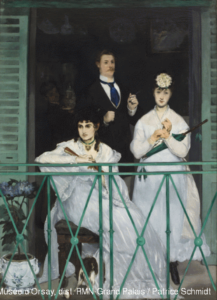
Figure 11. Edouard Manet. Le Balcon (The Balcony). 1868-1869. Oil on canvas. 170 x 124.5 cm. Musee d’Orsay, Paris, France.
By contrast, the pastel that Gonzalès submitted to the Salon, La Nichée (The Nest, 1874; Fig. 12), was accepted by the jury that year. La Nichée was likely accepted due to the perception of feminine decorum in both technique and subject matter. An interior, intimate moment centered on an elegant beauty rendered in soft pastel colors, the work’s delicacy offered a decided contrast to the “masculine” qualities of Une Loge aux Theatre Italiens.[48] The model sits before a table covered in a light and airy fabric, bathed in light pouring in from the window on the left. The hues of pink, blue, and grey dominate the picture and are harmoniously blended to give the composition a decidedly “feminine” surface that held evident appeal for the Salon jury members.
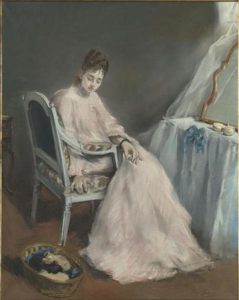
Figure 12. Eva Gonzalès, La Nichée. 1874. Pastel on paper mounted on canvas. 93.8 x 74.3 cm. Musée d’Orsay, Paris, France.
After 1874, Gonzalès began to add more elements of abstraction within her works in ways that departed from the Manetian style of her early work. For example, The Bouquet of Violets (1877-1878; Fig. 13) pastel on paper depicts a woman in a pink dress handling a bouquet of violets she prepares to arrange in a blue vase. The techniques Gonzalès used reflects current Impressionistic painting techniques. Gonzalès layered color upon color to create the shade and tonality she desired. She blended yellows and pinks into the slate blue hue of the wall behind the sitter in order to create the illusion of light reflecting and creating dimensionality within the wall. This same technique is used on the back of the dress, where Gonzalès employed shades of blue and orange to create a sense of volume in the fabric. Instead of blending the colors into one another here, the strokes are distinctly layered on top. The use of short indistinct strokes, with the impression of blurring around the sitter’s head, creates the effect of the sitter turning towards the viewer. These technical strategies appear designed to engage with the Impressionists’ interest in portraying a specific, and fleeting, moment in time.
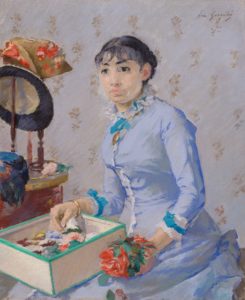
Figure 14. Eva Gonzalès, The Milliner. 1882. Pastel on canvas. 45 x 37 cm. The Art Institute of Chicago, Chicago, Illinois, United States.
Gonzalès’s The Milliner (1877; Fig. 14) further showcases her preoccupation with Impressionist techniques and subjects. In this example, we can see the way Pollock’s “game play” operated in practice. The Milliner is an act of “reference” in its clear relation to Degas’s favored subject matter.[49] The work features a seated female milliner with a box of assorted artificial flowers on her lap. The sitter has been identified as a garnisseuse, a milliner responsible for decorating hats with flowers and plumage.[50] On the level of technique, too, we see “reference” to characteristics of Degas’s work. The short bold strokes of the pastel give the work the appearance of speedy execution, suggesting the hectic atmosphere typical of a millinery shop. Gonzalès’s use of crosshatching and painterly strokes, and the use of color to add shadow, aligns her technique with that of the Impressionists. The act of “deference” is reflected in the use of the pastel medium and its evocation of gender decorum. Gonzalès’s “difference” lies in her transformation of precedents to establish her own distinctive aesthetic through her composition and color palette. Unlike the muddy, muted palette of Degas’s Modiste (1875), Gonzalès employed a markedly bright, colorful range of hues that must have made this work stand out from other pastels produced at that time.[51]
These acts of reference, deference, and difference endeavored to remove Gonzalès from the shadow of Manet in order to develop her own artistic identity. Gonzalès’s choice to utilize the pastel medium allowed her to strike a delicate balance between traditional gender norms and experimentalism. Gonzalès strategically adhered to convention in showing at the Paris Salon and using pastel. At the same time, she aligned herself with the artistic vanguard in Paris and formulated a distinctive approach to their characteristic subjects and techniques.
46. Gaze, 597.
47. Mary Hunter, Mary Hunter, “Expert Hands, Infectious Touch: Painting and Pregnancy in Berthe Morisot’s The Mother and Sister of the Artist (1869-1870)” In Andre Dombrowski (ed), Companion to Impressionism (Hoboken:Wiley Blackwell, expected publication September 2021).
48. Gaze, 597.
49. Esther Bell, “Degas, Millinery, and The Grand Tradition,” In Simon Kelly and Esther Bell, eds., Degas, Impressionism, and the Paris Millinery Trade (San Francisco: Fine Arts Museums of San Francisco, 2017), 83.
50. Simon Kelly, “Silk and Feather, Satin and Straw: Degas, Women, and The Paris Millinery Trade,” In Simon Kelly and Esther Bell, eds., Degas, Impressionism, and the Paris Millinery Trade (San Francisco: Fine Arts Museums of San Francisco, 2017), 22.
51. Bell, 83.
